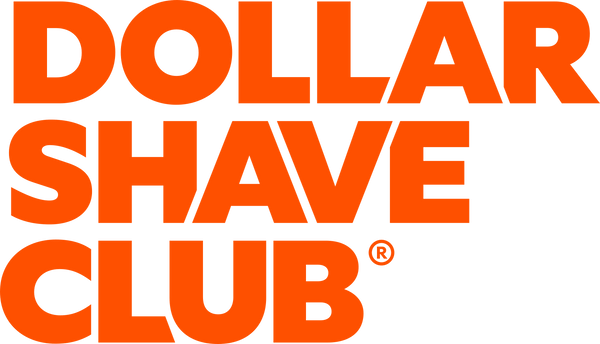
Beard Styles: How to Grow a Beard Without Looking Like a Wild Man
While the best beard styles are a matter of personal preference, there are many beard shapes that have stood the test of time — plus the hipster beard armageddon — and which many guys will continue to wear. Below are seven of the best beard styles out there, with advice from hair and beard stylist Stacy Trevizo on how to cultivate and care for them.

Beard Style: The Goatee
What It’s Best For: Emphasizing your strong, pronounced chin.
How to Achieve It: Rather than trying to shave a half circle right around your chin, Trevizo recommends first making sure both sides of your goatee are even, then trimming the bottom. “Shave a line from the corner of your mouth to the bottom of your chin, then match that line on the other side,” she says. “From there, round out the bottom of the beard.” If you have a rounder face or a double chin, Trevizo warns that trimming the bottom of your goatee too much is a bad look. “Either blend the bottom of the goatee into your neck — rather than creating a hard line — or be careful not to trim it so high that the bottom of your chin pokes out from underneath the beard,” she says.
Beard Style: The Van Dyke
What It’s Best For: Re-living the grunge era.
How to Achieve It: Because the Van Dyke is essentially a goatee with a mustache, the methodology behind sculpting it is similar. You will, however, have to pay your mustache some extra attention. “Use a small pair of grooming scissors to occasionally trim lightly along your upper lip, so you don’t have hair hanging into your mouth,” Trevizo says. She also recommends trimming your nose hairs frequently, as “you don’t want your mustache to look like it’s growing out of your nose.”

Beard Style: The Rugged Beard
What It’s Best For: Backpacking across Europe.
How to Achieve It: If you have patchy facial hair, this beard style is probably not for you, since even coverage across the cheeks is the only thing that differentiates the rugged beard from, say, the chin strap. If you have thick facial hair, however, Trevizo says the key to growing a rugged beard is minimal maintenance. “Take either a razor of trimmer to your neckline and your upper cheeks every so often,” she says. “But only remove random whiskers that stray from the borders of your beard — you’ll lose the ruggedness of this beard style if you give it sharp borders.” As far as maintenance goes, Trevizo recommends occasionally lightly grazing a razor along the bulk of your beard to remove stray hairs.

Beard Style: Five O'Clock Shadow
What It’s Best For: Being the first (and last) guy in the office.
How to Achieve It: This short beard style is arguably the easiest to achieve, but you’ll have to take into account the color of your facial hair. “If you have lighter facial hair, which is harder to see, you want to use either a #1 clipper or #2 clipper every two to three days,” Trevizo explains. “Whereas guys with really thick, dark facial hair can simply use a clipper without the guard every other day to maintain their stubble.”

Beard Style: The Chin Strap
What It’s Best For: Showing off your perfect cheekbones while still having a beard.
How to Achieve It: One of the more unorthodox beard shapes, the chin strap isn’t for those with rounder faces, but it can nicely accentuate the prominent chins of those with more chiseled jawlines. “You’re going to want to first shave both cheeks evenly, similar to what we did for the goatee,” Trevizo explains. The best way to do this is to apply shaving cream to your entire face, then run your finger along your jawline — from one sideburn to the other — removing the shaving cream to create a guide for where not to shave. From there, simply shave your cheeks, leaving the hairy guideline alone, and use our handy necking guide to shave your neckline evenly. To maintain your chin strap, Trevizo recommends shaving your cheeks and neck with a razor either every day or every other day, to avoid losing the hard line the chin strap is known for (that line will also act as your guide to evenness while shaving). Finally, use a clipper on the strap itself every few days to maintain your ideal length.

Beard Style: Long but Shapely
What It’s Best For: Riding motorcycles across the country.
How to Achieve It: “There’s a period between having a medium length beard and having a long beard that feels messy and patchy, which is why it’s a good idea to let your beard grow for a whole six months before attempting this beard style,” Trevizo explains. Once your facial hair is long enough for your liking, she suggests using a comb and a small pair of grooming scissors to trim the mustache hair out of your mouth and to shape the sides of your beard. To do this, place the comb just under your ear so that the teeth are facing away from your nose and just a small amount of hair is showing through the comb — then, trim this hair off, and repeat on the other side. Once you’ve done this, cut straight across the bottom of your beard, squaring it off and being careful not to cut too much length — the point of having a long beard is having a long beard, after all. Once that’s done, use a razor to lightly hover over any stray hairs for a cleaner, more textured look whenever you feel your beard is getting out of hand.

Beard Style: The Bushy Beard
What It’s Best For: Effortlessly chopping down trees.
How to Achieve It: The bushy beard is the wildcard of beard shapes — and the last of our favorite beard styles. The only real difference between it and the long but shapely beard is the fact that you won’t be trimming the ends of the mustache as often. “You should still trim your mustache more frequently than the rest of your beard, but only the center of it — right underneath your nose,” Trevizo says. “That way, you can curl the rest of your mustache using either a beard wax or a hair clay.” She also recommends using a moisturizing beard oil on this beard style to avoid dry, frizzy facial hair, since you’re not going to be trimming the ends like you would with the long but shapely beard. Now that you’re equipped with the tools and the knowledge to grow and maintain these forms of facial hair, which of these beard styles will you wear? Hmm... so many choices.

